Tornadoes and blizzards are facts of life out on the plains. Normally, however, they do not occur at the same time of the year. And neither of these “weather events” typically occurs in early October—which, a few years ago, was when I made the long drive across the nation’s heartland to Idaho, the home (or so I’d been promised) of some of the most diverse bird hunting our country has to offer. As a mixed bag addict of long standing, I was as powerless to refuse this opportunity as any other junkie when the carrot of his preferred score is dangled.
Thankfully I managed to avoid the tornadoes, one of which leveled a large portion of Wayne, Nebraska, in the northeastern part of the state. I wasn’t so fortunate with the blizzard, alas, which I slammed up against about 70 miles west of Valentine. I was tooling along on dry pavement, thinking ‘This isn’t so bad’… and then, in the span of about two minutes, I was in a white-out. This was the same freak storm—Atlas, it was called—that dumped four feet of snow on the Black Hills and killed thousands of cattle in western South Dakota.
I thought I could crawl into Gordon, where I’d been told there were a couple of motels, only to be disabused of this notion when a large orange-ish object resolved into a jacknifed Schneider National tractor-trailer blocking both lanes of Highway 20. At that point I turned tail and skedaddled back to Valentine, where I was able to get a room at the Super 8 before it filled up with fellow refugees.
After cracking a beer and flipping channels for a while I settled on a made-for-TV movie about the short, tragic life of the pneumatic tabloid star Anna Nicole Smith, a movie notable primarily for the presence of Martin Landau in the role of her wheelchair-bound oil tycoon husband (for whom she cared deeply, it goes without saying). In the meantime the weather socked in so ferociously that the idea of nipping across the street to McDonald’s was a non-starter, so I opened another beer and made do with my emergency ration of cheese, sausage, and Wheat Thins. I did take Tina, my English setter, outside to do her business but she made quick work of it, being in no more of a mood to tarry in those withering conditions than I was.
A day-and-a-half later we finally got to Idaho where, for the record, I bagged five species of birds: blue, ruffed, and sharp-tailed grouse, valley quail, and Hungarian partridge. The blue grouse and valley quail were firsts for me, and while I was also hoping for a crack at chukars, the one covey we moved gave us the slip. Tina pointed in precisely the spot my friend Shawn Wayment (a.k.a. the Bird Dog Doc) saw them down, but they’d obviously done what chukars do and run off, melting into the impossibly fractured, almost lunar, landscape. Tina literally ran her pads off trying to find them but after four days of hard hunting in that unforgiving terrain they were already in pretty rough shape by then.
More Like This
I stumbled across a good-sized shed from a Shiras moose one day, too, and even managed, with some difficulty, to lug it down the mountain. Shawn and his brother Andy were amazed at this find but it can only be included with an asterisk as part of the overall bag. I’d have much rather killed a chukar or, for that matter, more of anything. As noted, we did OK on the variety front, but from a quantity standpoint it was brutally tough sledding. There was a hell of a lot of walking between flushes, much of it steep and at altitude, and by the time I turned the car for home I was a wreck both physically and emotionally.
But that’s the risk you run when you become a mixed bag junkie. Sometimes you take a bad trip, man.
Ultimately, I blame Milt Dodds. Milt was a contemporary of my dad’s—and he was the greatest road hunter you ever saw. It wasn’t that he hated to walk; what went against his grain was doing it on spec. If we spied a couple of roosters sailing from a cornfield into a weedy draw, Milt would be the first one out of the car. But if someone suggested tramping a piece of cover simply because it “looked good,” he could muster a dozen reasons why it was a bad idea.
Milt had refined road hunting into an art form. He always sat in the back seat with the kid (that would be me) while Dad or Pete Macfarlane drove, and at the approved rural speed of 30 to 35 miles per hour nothing got past him—including the covey of bobwhite quail assembled one December afternoon on a sun-warmed, south-facing embankment in the Loess Hills of western Iowa.
“There’s a covey’a quail!” Milt cried, tensing up like a dog on point. I swiveled to glimpse them, plump as pears, decorously arranged against the pale winter grass. They were the first quail I’d ever seen in the flesh, and while the sighting alone was a thrill the possibility that we might actually get one was almost more than I could bear.
For the record, one is precisely the number we collected, despite excellent cooperation on the part of the birds. “Man!” Milt exclaimed, shaking his head as he shucked the shells from his Model 12. “That’s like trying to shoot down a buzz-bomb!”
A couple miles down the road a cock pheasant made the mistake of poking his gaudy head out of the goldenrod—and Milt was on him like stink on a skunk. Carrying the rooster back to the car, he observed, “Compared to those quail, he looked like a B-52!”
It wasn’t much, as mixed bags go, but it was enough to leave me hopelessly hooked—and I’ve been looking to score ever since. The first time we added Hungarian partridge to a late-season bag of Iowa pheasants and quail still stands out as one of the most completely satisfying hunts of my life. I actually did a Milt Dodds and spotted the Huns from the road, but it took two flushes and nearly a mile of sloshing through wet, ankle-deep snow before we were able to draw blood. I doubt Milt would have lasted past the first flush.
Still, the most unusual and unrepeatable Iowa “mixed day,” as the Brits call it, was the time Terry Barker and I were hunting near the farm where he’d grown up in the central part of the state. We thumped a couple of roosters in fairly short order as they flared over the cut corn; then Willie, Terry’s wonderful English setter, nailed a covey of quail dead-to-rights in a shallow, briar-snarled ditch. The survivors flushed more-or-less straightaway, and when Willie locked up again Terry waded in expecting a single. Instead, he kicked up, and promptly dispatched, a fat woodcock—at the time, only the second woodcock I’d seen in the state of Iowa.
Later that same morning, working the spongy margins of a draw that ambled between the shoulders of a picked cornfield, I remarked, “This looks like a helluva spot for snipe.” The words were barely out of my mouth when, as if on cue, one flushed, jinking and squawking, at 30 yards. At 45 yards, a semi-miraculous shot by yours truly brought it down.
I don’t expect to see that particular bag again, although over the years snipe have probably played the “bonus bird” role, turning ordinary days into mixed days, more often than any other species of my acquaintance. I occasionally flush them while woodcock hunting in mucky cover, sometimes not realizing which species I’m looking at until the bird is out there a ways. By the time I’ve missed with both barrels I’m usually able to make a positive I.D.
During the years I lived in Door County, the slender peninsula known as Wisconsin’s “thumb,” I came to think of a certain public hunting area, Mud Lake, as my “home” cover. Most of it was impenetrable, a sink-to-your thighs morass of cedar-tamarack swamp, but there were some good, birdy edges, too, places where the ground got vaguely higher and some long-forgotten farmer had cleared a couple of rocky forties for cropland.
One chilly October day, I met my great friend Andy Cook there for a late-afternoon hunt. In those days I had Emmylou, who was so deadly on woodcock it was almost unfair, and it wasn’t long before Andy and I had both shot woodcock over her characteristically stylish, doubt-free points. Then Popper, Andy’s beamy yellow Lab, boosted a grouse from a copse of dense cedars. I heard Andy’s cry of “Grouse!” just in time to spy the bird as it flashed across the one opening that afforded me a clear shot. I managed to put a good swing on it, too, undoubtedly because I didn’t have time to think.
Coming to a place where a narrow, spring-fed creek winds through a meadow dotted with tussocks of marsh grass, I suggested to Andy that he and Popper check it out for snipe. Several big chinook salmon, fish that had worked their way up from Lake Michigan, were holding in the current, the water sheeting over their broad backs. I’d turned to remark on this to Andy when he hollered “Snipe! Coming at you!”
No kidding: The snipe, looking like a dart with wings, gave me the unnerving impression it intended to impale me. I was about to duck, in fact, when it banked hard to the left, only to be intercepted by a load of #8s.
Andy walked over, broke open his Ruger o/u, and stuck out a beefy hand. “Congratulations, sir,” he said. “You’ve just achieved the Mud Lake Grand Slam.”
Of course the classic American mixed bag is ruffed grouse and woodcock, these birds that are polar opposites in every respect—even in the way they present on the table—and are therefore beautifully complementary. Time was when you could almost take it for granted but in these grouse-impoverished days, not so much.
Huns and sharptails on the High Plains are another classic pairing. I can’t recall ever not bagging both species on the days I was privileged to hunt behind Ben Williams’ pack of pointers and Brittanies, although the memory that brings the biggest smile to my face is the time in North Dakota when, after a hell of a good sharptail-Hun hunt on a warm September day, Tom Ness and John McMahon relaxed in lawn chairs, sucked down gin-and-tonics, and criticized my knife skills while I cleaned all the birds. I should note here that I did this of my
own free will, having learned from unpleasant experience that in this crowd cleaning the birds myself was the only way to guarantee they’d be fit for future consumption.
On a couple of occasions I’ve been blessed to add a sage grouse to a bag of Huns and sharptails, but bringing one of these mighty birds to hand is such a momentous event that it tends to eclipse everything else that happens that day.
There were bobwhite quail and blue (scaled) quail in the thorns of West Texas, prairie chickens and sharp-tailed grouse on the prairies of South Dakota. Sometimes pheasants there, too, although by the time pheasant season opens the prairie birds have acquired this annoying habit of flushing way, way wild.
The mixed bag habit I picked up as a kid having proven impossible to kick, half-a-century later I keep following them, powerless to resist.





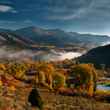
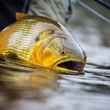




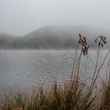
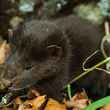



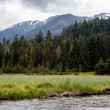





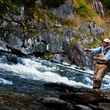



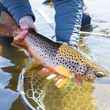
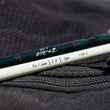


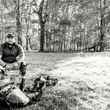
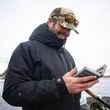
Comments